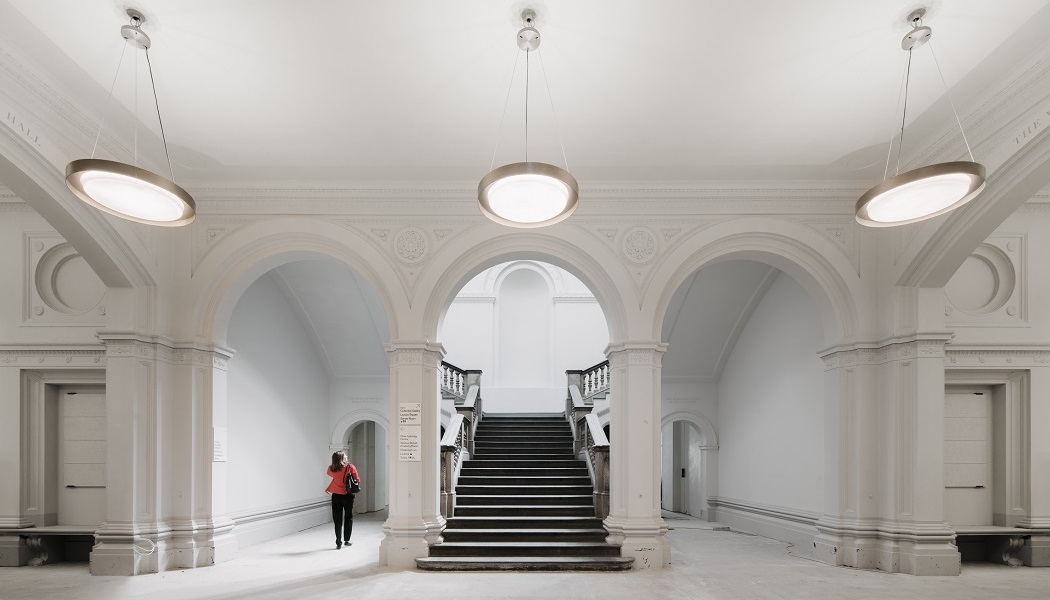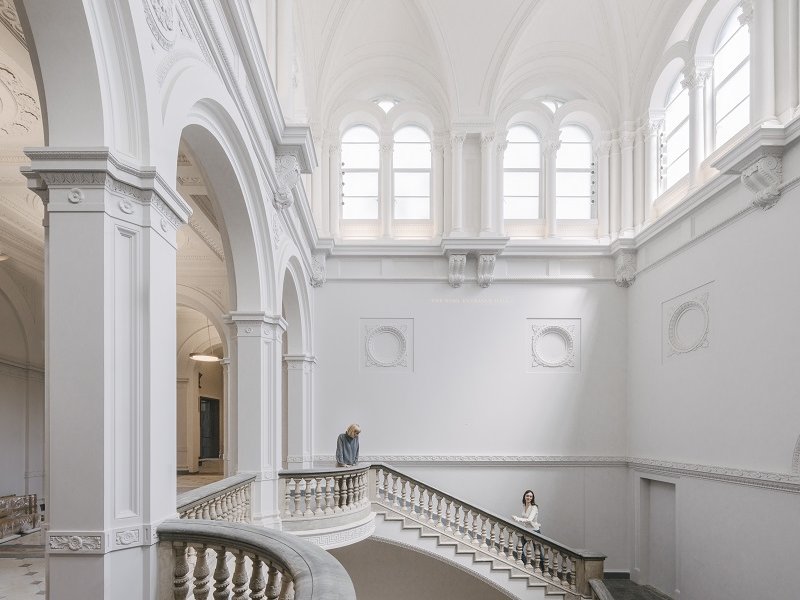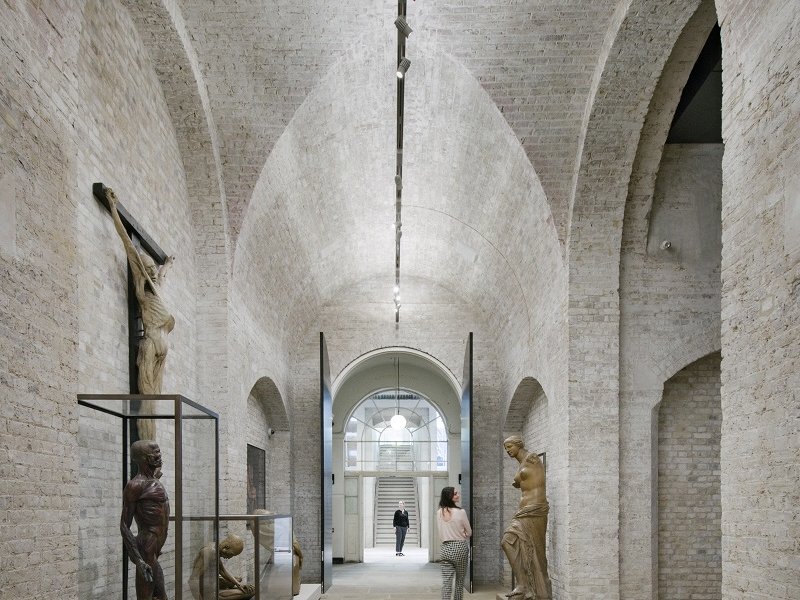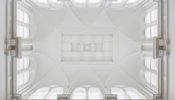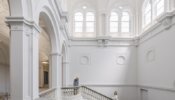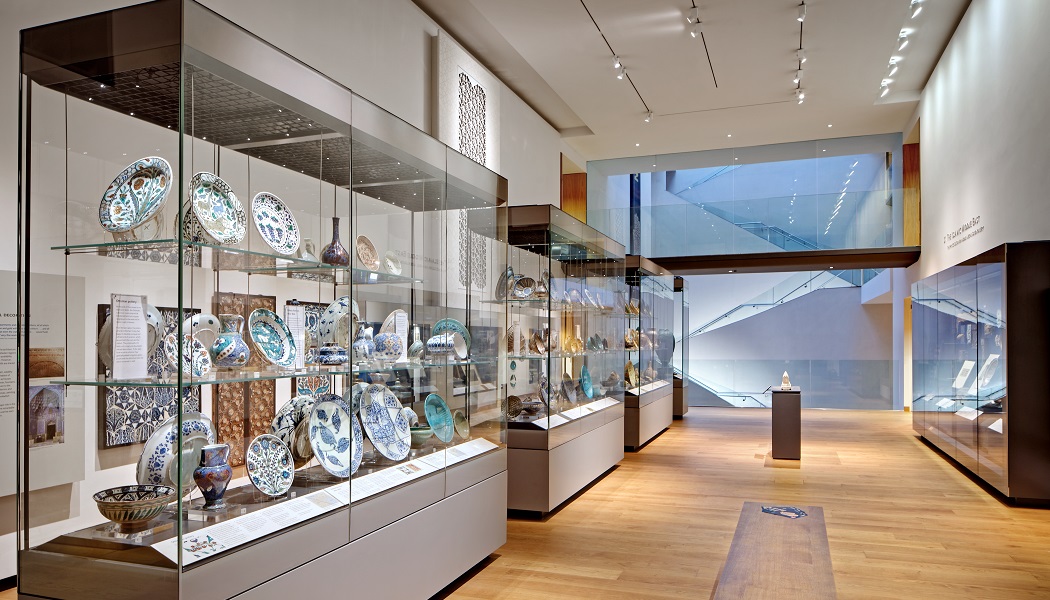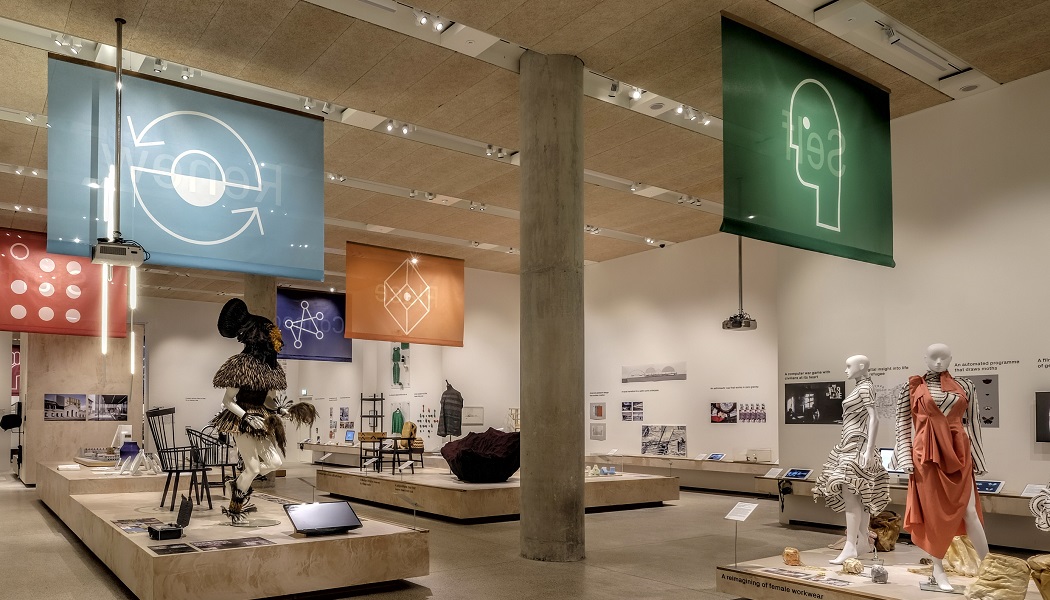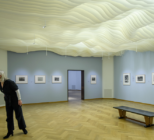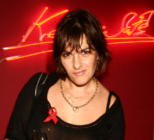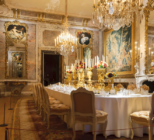Discussions over the successful use of light and shade can often be heard in galleries and museums. This is, however, usually in relation to the content and composition of paintings rather than the lighting system an institution has opted to install.
Despite evading the attentions of many visitors, lighting in museums and galleries has changed rapidly in recent years. Highlighting an object in a favourable fashion, ensuring artefacts or artworks are preserved, reducing energy usage and utilising emerging technologies to gather visitor insights are all now part and parcel of most institutions’ considerations when choosing which systems are best suited to a space.
Far from simply a curatorial decision, scientists and engineers are now a huge part of lighting at cultural venues. Andrea Tarsia, head of exhibitions at the Royal Academy, describes lighting as “part art form, part science and…absolutely crucial to making artworks come alive in an exhibition.”
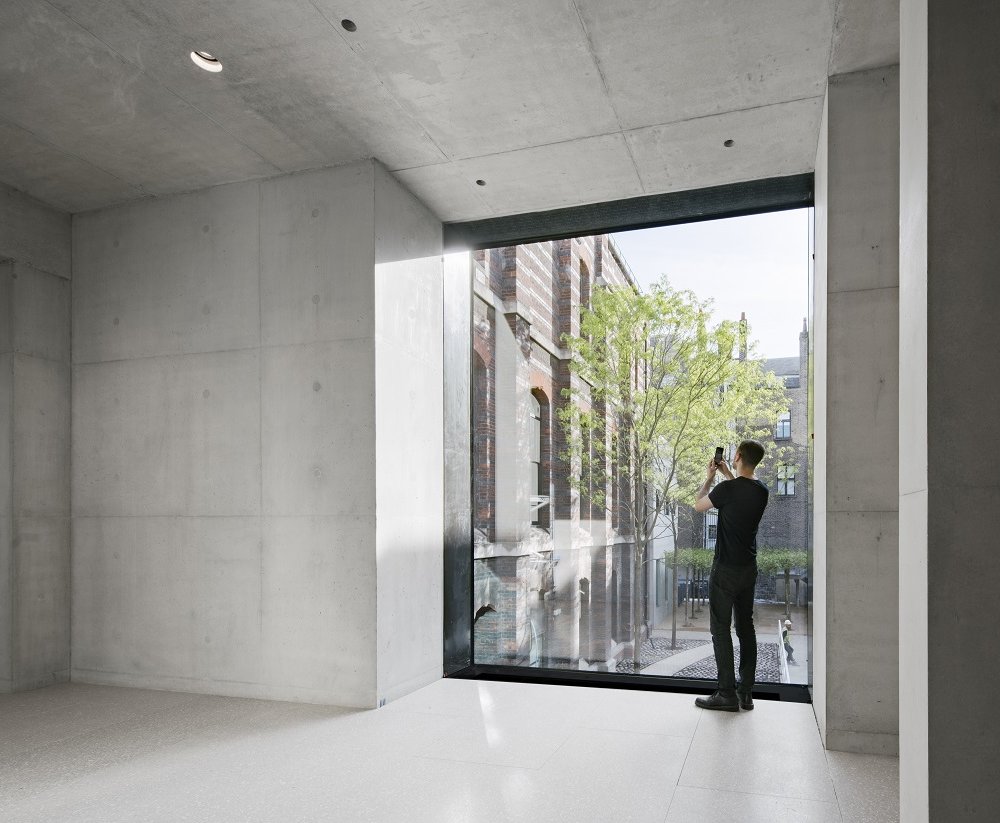
Historically prevalent incandescent bulbs were doing the world’s cultural heritage no favours. Intense ultraviolet rays, too, are no friend of the painted medium. Sapping vibrancy out of paintings and bleaching the pages of paper-based artefacts occurred far too often in years gone by. Van Gogh’s world-renowned still life series Sunflowers (1888) offers up a case study of just how necessary intelligent lighting is. The gradual alteration of the iconic yellows in those works led to years of restoration work – which is still ongoing today – to ensure some of the most recognisable paintings on the planet were not damaged beyond recognition.
The science behind the damage certain colours of light do to specific pigments is now a key area of research and innovation in the sector. This is, however, nowhere near the extent of museum and gallery lighting’s potential.
Tomorrow’s world
In 2014, electrical giant Philips embarked on an exploration of museum lighting technologies in association with Rijksmuseum Boerhaave. The global tech firm has carried out research on the Leiden-based museum site for the past century, and on this occasion used a retrospective exhibition of its previous findings to trial groundbreaking lighting innovations. This, the company hoped, would create a ‘template for museums of the future’.
An LED-based indoor Positioning System was debuted at the event, which used GPS tracking to provide visitors with tailored lighting and information depending on where they move in the space; all to get the most out of each exhibit.
While the content of the show was historical, Dirk van Delft, director of Rijksmuseum Boerhaave, said he and his team had worked with Philips to deliver an experience that “looked forward, not just at the past.” Such lighting technologies were, by their inclusion, deemed as ‘the future’ of museum lighting by Philips.

“We now know that offering a location aware and interactive experience encourages people to visit our museum more often,’’ van Delft explained. ‘’What is also really exciting and innovative is that we were able to achieve this by using energy efficient lighting, giving us a double advantage.’’
During the 2014 experiment, visitors younger than 50 were all open to trying ‘connected lighting mobile applications’. In a follow-up survey almost half of all respondents said they would like to receive this type of location-based information and use way finding services.
“The survey findings show that we need to think of lighting differently,” noted Jella Segers, then of Philips Lighting. “Lighting has gone beyond mere illumination. We can now deliver great quality and highly energy-efficient LED lighting that acts as a positioning grid to deliver targeted information, enriching people’s experiences of the places they visit.”
While this research produced some interesting results, and may well have planted the seed from which a future breakthrough could emerge, theory only gets the sector so far. Practical implementation is the only measure of progress.
Lighting the touch paper
Last year London’s Royal Academy of Arts reopened after a large scale redevelopment project, coinciding with its 250th anniversary celebrations. A successful opening night at a freshly-refurbished, multimillion pound, state-of-the-art gallery space relies on every aspect of operations running smoothly. Attention to the minutiae makes all the difference.
Making pivotal decisions on how and where to introduce artificial light to a site which combines brand new architectural additions designed by Sir David Chipperfield and historic Grade II* listed 18th century buildings is a monumental task.
“The challenges were abundant, not least when dealing with some strict facilities lighting requirements and meeting those requirements alongside the needs and aspirations of an institution of artists and architects,” Tom Billington, RA’s head of estates, told Advisor.
“There were some nail biting moments resulting from working with truly bespoke lighting installations and the often long lead times these incur, as well as coordinating all the specialist teams needed to complete the project.”
Ask the experts
Most institutions will bring in external lighting specialists to advise on the installation of new systems, with many outsourcing the entire process. To gain a further insight into how these firms operate and what technologies are emerging in the sector we spoke with lighting experts from Enigma Lighting and Concord by Sylvania UK.
Billington said that throughout the project the organisation has maintained a “unified approach to lighting,” primarily due to its “duty of care to take and consideration for the requirements of individual works, from our own collection or those on loan from an external lender.”
Despite this uniformity, he remains confident that the flexibility and capability of the site’s lighting stock can support a variety of different scenarios within a single light fitting.

“Efficiency was at the forefront of our considerations as we updated lighting throughout the site,” he added. “It’s a consideration in every corner of the building and informs how both galleries and circulation lighting is programmed and operates. This is no small feat, the expansion of the campus into Burlington Gardens was an ideal project to continue the investment into energy efficiency.”
The main galleries, he continued, are at their best in natural daylight. During the day lighting is used sparingly and is programmed to slowly come into effect around sunset.
Concluding, Billington said the process of implementing an innovative, world-leading lighting system in had been an historic building had proved a “wonderful challenge” and delivered a site with potential the team are “still aspiring to fulfil”.
Man-made, naturally
Natural light versus artificial light remains a substantial consideration for galleries and museums, but not as a binary choice. Direct sunlight – and its relentless bleaching of anything it makes sustained contact with – is never a sole solution. Combining the two or managing flows of natural light are commonplace in today’s cultural sector.

One institution which has taken a novel approach to utilising the positives of natural light is the recently refurbished Seattle Art Museum. The site’s original Art Deco architectural design is underpinned by a series of interconnected octagonal galleries, all of which had been equipped with true skylights in their ceilings.
As the years passed and knowledge increased around this, the openings became predominantly covered in order to prevent damage to light-sensitive artworks.
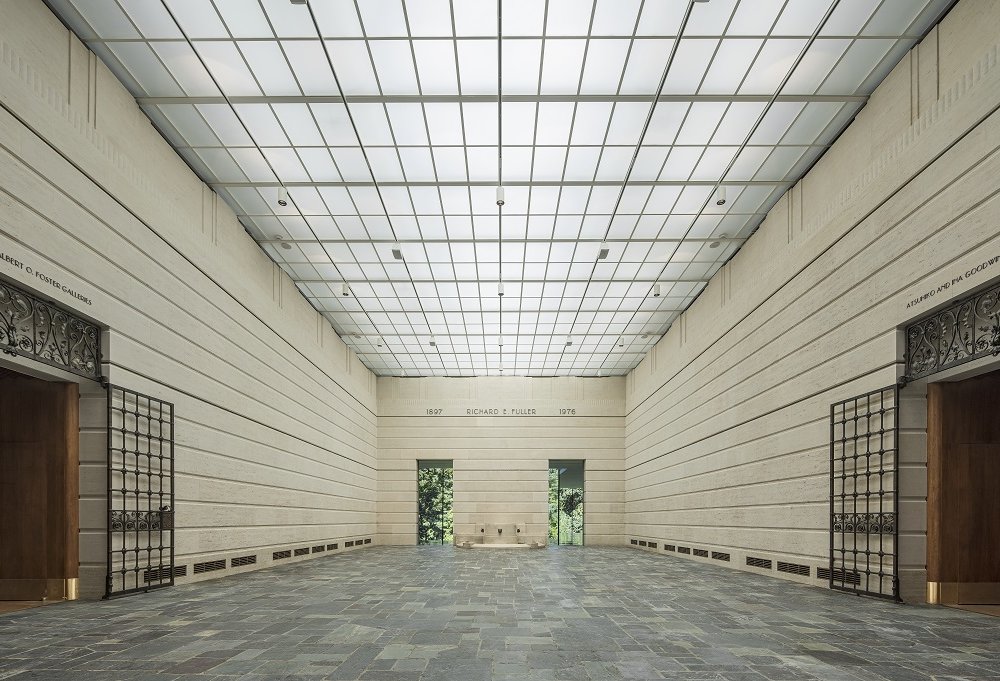
A $54 million renovation of the institution’s Asian Art Museum, spearheaded by architects LMN, has sought to deliver the best of both worlds. With the aim of reviving the design-rich skylights but avoiding the associated risks, controllable artificial light which mimics natural light was deemed the answer.
This new design incorporates so-called ‘light boxes’ that were installed above the windows and are lit by LED strips surrounding each skylight’s perimeter. This is done to emulate the soft glow that natural light would deliver across the ceiling, with the added bonus that the intensity and tone can be tailored depending on what is on display in the gallery below.
“The Asian Art Museum has incorporated illumination in the galleries since it opened in 1933, so it was crucial to restore its signature lighting ambiance in the renovated building,” Lee Richardson, the institution’s director of facilities, noted. “The solution of dimmable LED strips works aesthetically, but is also safe for artworks and energy efficient.”
LMN said this artificial lighting option “allows the museum to set the stage for new art, better preserve their collection, and provide newfound flexibility for future displays.”

